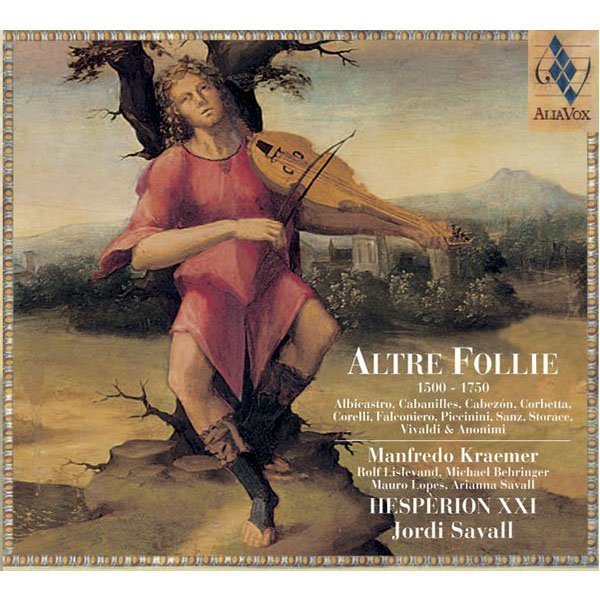ALTRE FOLLIE
1500 – 1750
Hespèrion XXI, Jordi Savall
17,99€
Out of stock
Ref: AVSA9844
- Hespèrion XXI
- Jordi Savall
Throughout the fifteenth and sixteenth centuries, as the new, centralized power of the absolute state was established in most European nations, royal courts all over Europe became the very heart of cultural and artistic life in their respective countries. They assembled an elite of aristocratic courtiers who were expected to master the principles of poetry, dance and vocal and instrumental music, as much as they were supposed to follow a strict and complex etiquette in all aspects of daily social interaction, adopt a luxurious and ever-changing fashion code, or sustain a refined conversation with a lady.
The traditions of popular culture inherited from the previous centuries were not necessarily rejected here as a whole, but they were subject to a process of intense transformation, losing their most obvious rural connotations and adopting new, elaborate rules that required a lengthy learning process only available to the children of the nobility from a very early age. International, cosmopolitan models circulated within this network of the aristocratic courts in the various countries, following the direct example of whichever court was considered the most fashionable at each particular time: that of the Kings of England in the early fifteenth century, at the peak of their military and political power in the continent; that of the Dukes of Burgundy immediately afterwards, when they were by far the wealthiest sovereigns of Europe; that of the Kings of France, in the aftermath of their victory over the Burgundians; those of the wealthiest Italian states at the turn of the sixteenth century when the artistic models of Renaissance Italy had become irresistible. But each specific court–some more than others, of course–also kept strong ties with its own local cultural traditions, even if these were in the process transformed to a more or less radical extent in the general pursuit of an unmistakable image of aristocratic distinction.
+ information in the CD booklet
RUI VIEIRA NERY
University of Évora







Share